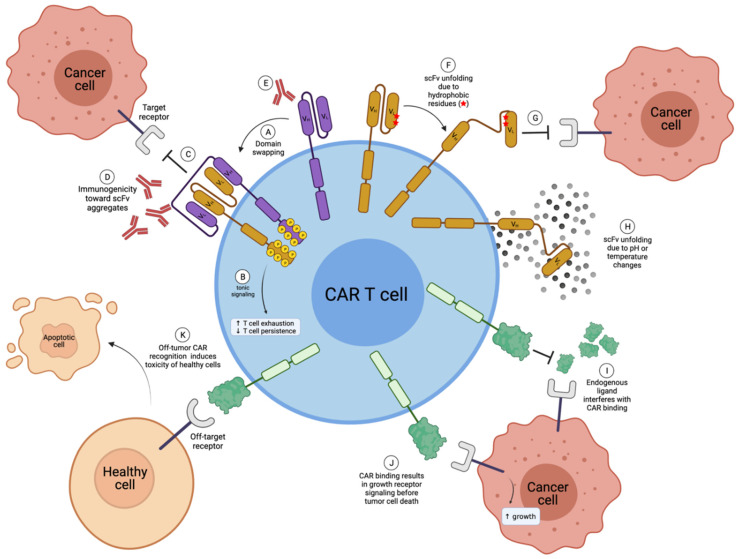Figure 3.
Disadvantages of scFv-based and natural receptor- or ligand-based CAR T cells. (A) Multiple scFvs can undergo domain swapping, where the VH of one scFv will incorrectly pair with the VL of another scFv, creating CAR aggregates; (B) CAR aggregates induce tonic signaling in CAR T cells, which is known to enhance T-cell exhaustion and decrease T-cell persistence in vivo; (C) scFv aggregates can no longer bind to the target receptor; (D) receptor aggregates can be immunogenic; (E) in some cases, scFvs can be immunogenic; (F) hydrophobic residues within scFvs can cause unfolding; (G) unfolded scFvs are no longer able to bind to the target receptor; (H) scFv unfolding can also be due to pH or temperature changes, for example during freeze-thaw cycles; (I) endogenous ligand (or receptors) may interfere and compete with CAR binding for the target antigen in the case of natural receptor-based or ligand-based CARs; (J) natural receptor- or ligand-based CAR binding may induce detrimental target receptor cell signaling; (K) natural receptor- and ligand-based CARs can have greater off-target toxicity. VH; Variable heavy chain. VL; Variable light chain. Created with BioRender.com.

